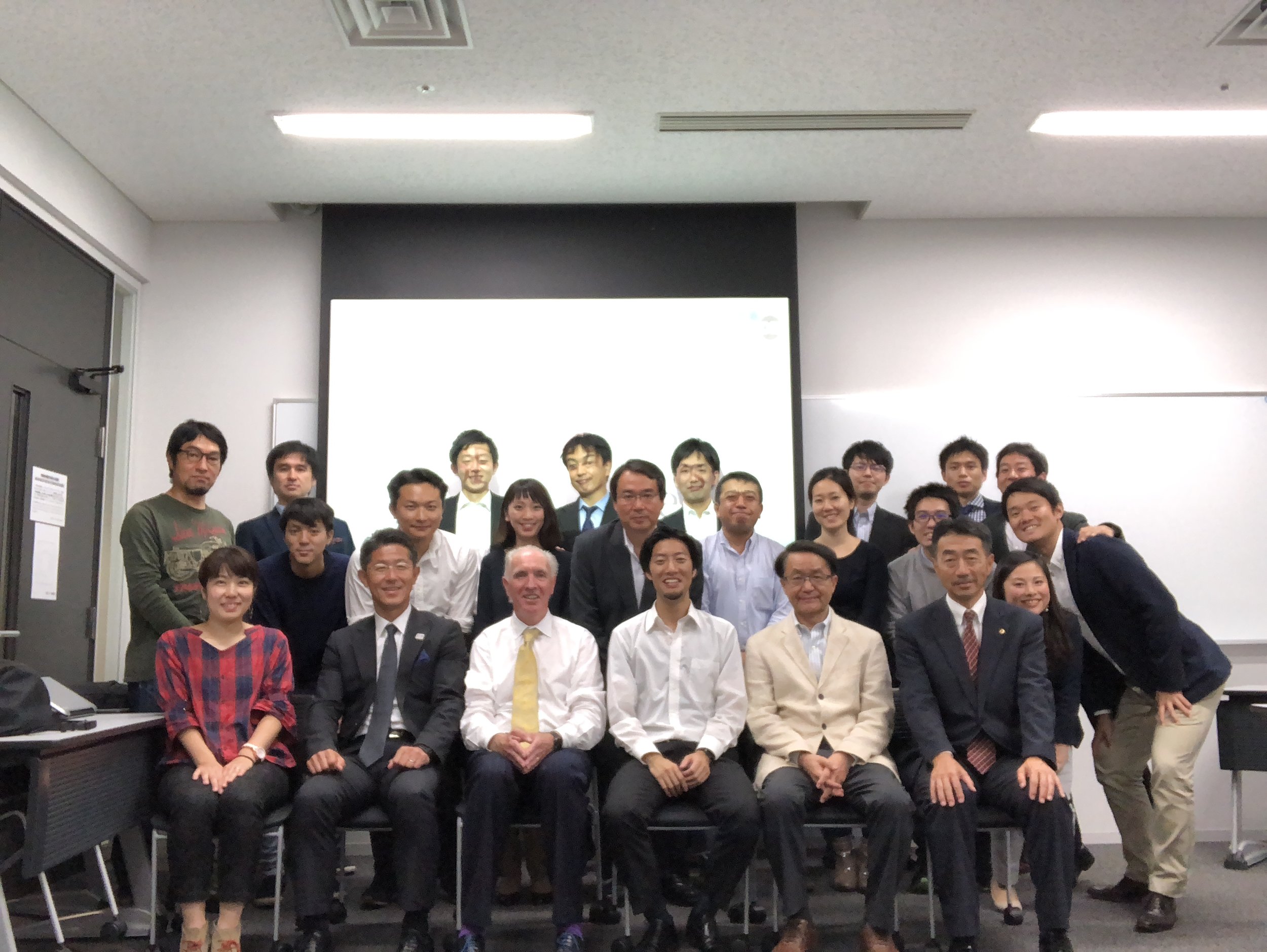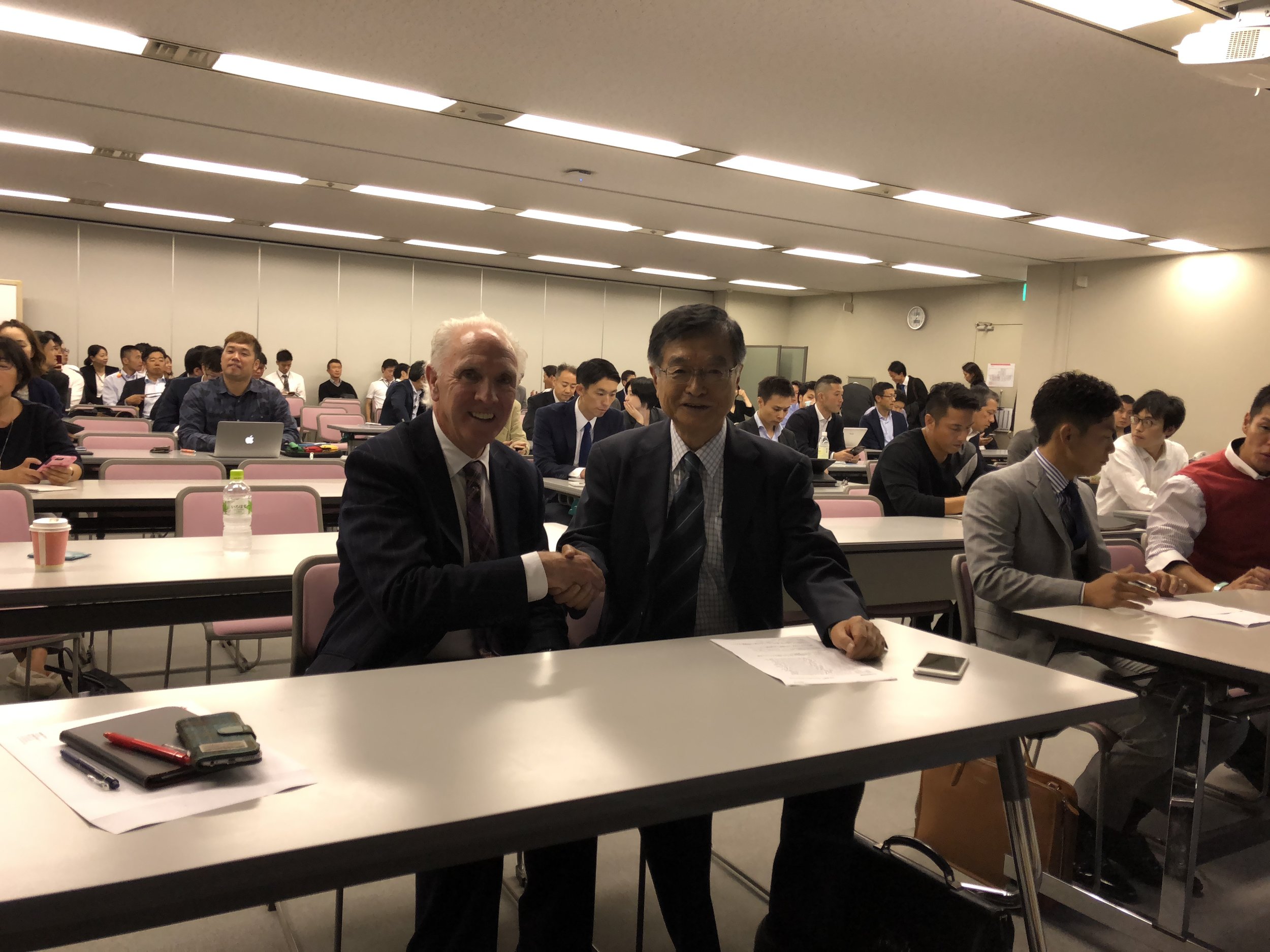The Japanese archipelago has 6,852 islands but only about 430 are inhabited; in my 16 visits I’ve been to just 8 islands so far. Although the total land mass of Japan is around twice the size of the UK, most of the country is covered by forest and mountains; as a result 90% of the 126 million population live in very concentrated urban areas.
Read MoreFitness Industry in Tokyo, Japan
David visited Tokyo last week to attend a number of Japanese fitness industry events.
He met with the President of Sasakawa Sports Foundation for the release of their white paper on "Sport in Japan 2017". He presented to the Fitness Industry Association of Japan and the Waseda University.
He also visited a number of health clubs. boutique studios and gyms including Aqua Sports & Spa, Deportare Club, R-Fitness, B-Monster Boxing and Anytime Fitness.
Japan & IHRSA 2017
David will be presenting his thoughts on the UK Fitness Industry in Tokyo, Japan this week. On his return to London, David will be speaking at the opening of the 2017 IHRSA European Congress.
His agenda is as follows:
- 13th October > Meeting with the Japan Sports Agency & presenting at the Waseda University
- 16th October > Meeting with the Development Bank of Japan
- 17th October > Presenting to Sasakawa Sports Foundation
- 18th October > Presenting to Sasakawa Sports Foundation
- 20th October > Presenting to the Fitness Industry Association of Japan
- 23rd October > Presenting at the IHRSA European Congress in London
IHRSA Opening Keynote - The State of the UK Fitness Market lead by David Minton...
The UK is unique in auditing the fitness industry in granular detail each year. The Leisure Database Company has developed a consistent methodology for the industry and built a database now used by operators, suppliers and financiers to the industry. You will receive highlights from the annual State of the UK Fitness Industry Report, which includes trend analysis, growth in number of gyms, members, value of the industry and the penetration rate, which reached 14.9% in 2017. David believes the UK is beginning the golden age of fitness and will share his projections of growth leading to 2020.
Manpo-kei
The Tokyo Olympics in 1964 made history by being the first to be telecast internationally and popular sports, including judo and sumo wrestling, were broadcast in colour. Public interest in the Games also created a lasting legacy which organisations around the world have adopted and keep adopting today.
To paraphrase Neil Armstrong on the Apollo 11 moon landing, that’s 10,000 steps for mankind and one giant step for a healthier society.
Published findings found that the average Japanese person took between 3,500 to 5,000 steps per day. A Japanese research team lead by Dr Yoshiro Hatano capitalised on these findings and the nations interest in sports. The team recognised that if this could be increased to 10,000 steps a day, people would become healthier. And so, Dr Hatano began selling a 10,000-step pedometer known as ‘manpo-kei’ (10,000 step meter) and this arbitrary number quickly grew into the ideal daily number to aim for. Japan’s Ministry of Health still recommends a daily walk of 8,000 to 10,000 steps.
Fifty years later the UK National Obesity Forum, which says the average Briton walks about 3,000 -4,000 steps a day, suggests we should aim for between 7,000 and 10,000. The National Health Service (NHS) is promoting “Walking for Health” as it is simple, free and one of the easiest ways to get more active, lose weight and become healthier. In London, the NHS is working with Transport for London (TfL) to encourage walking as part of your journey to work, walking to the shops, using the stairs instead of the lift, leaving the car behind for short journeys. Both organisations are encouraging people to use apps to track how much and how fast you’ve walked. TfL have produced maps showing walking times between stations to encourage a variety of walks including parks, trails, towpaths and nature reserves. My local favourite is from Paddington, which is Zone One to Warwick Avenue, one stop on the Bakerloo Line but in Zone 2. The walk goes along the canal, past the Robert Browning Island in Little Venice, where the Regent’s canal and Grand Union Canal meet. You save money and have a car free walk.
Promotion of walking groups and inspiring walks are growing in popularity along with the more established Ramblers organisation, Britain’s walking charity also promoting walking for health. The UKs National Parks run free guided walks for the whole family during holidays. Walkit, Active 10, Hikideas are just a few of the apps you can download that can suggest routes, journey time, calorie burn, step count and carbon saving.
The technology for a pedometer has changed over the past 50 years with the so called wearable market growing from nothing in the mid-sixties to an estimated $26 billion by 2019 and an estimated 245 million wearable devices being sold next year. Smart watches are now the most valuable segment, taking 60% of market value but fitness trackers remain most popular, accounting for more than half of all wearable shipments in 2016. Smart phones and watches have been tracking our every move and that data usually goes into an app so you can see the results. Most of the apps also allow you to load workout data from other activities and wearables into your phone activity app so it’s all in one place. The iPhone 5 was the first phone to contain a motion coprocessor, developed by the UK’s most successful technology company ARM Technologies, based in Cambridge, recently sold to Japanese SoftBank for £24 billion. ARM technology is used in over 90% of all smart phones worldwide. With the release of the iPhone 6 Apple Health was introduced to present activity data back to its owner via an app on every Apple phone.
Most governments’ guidelines and health agencies plus organisations such as the World Health Organisation (WHO), US Centre for Disease Control (CDC), US Surgeon General, American Heat Foundation, US Department of Health and Human Services recommend daily activity of 10,000 steps. A study published in the Journal of The American Medical Association concluded that use of a pedometer (or a tracking device) is associated with significant increase in physical activity and decreases in body mass index and blood pressure.
At Tokyo 2020 we will all be busy urban adventurers and 10,000 steps a day will be easily completed going from one event to another. It will be a fitting tribute to Dr Hatano that so many people will be doing 10,000 steps in his city 50 plus years after he invented the basic metric to good health.
By David Minton, Director of LeisureDB & Correspondent for SSF in London
Original Article: Sasakawa Sports Foundation
Tokyo 1964 - 2020
David has recently been appointed as the correspondent for the Sasakawa Sports Foundation (SSF) in London. Read David's first SSF article below (click to read the full article).
The SSF was established in March 1991. Since then the SSF has implemented a wide range of activities such as survey research, grant programs, and international cultural exchange in order to promote the enjoyment of sports by "anyone, anytime, anywhere".
As Japan has faced the declining birthrate and the ageing society, the public awareness about the importance of sports and healthy lifestyles has increased. Despite this fact, over the past 10 years, the number of people who are unaccustomed to playing sports has remained steady at 5 out of 10. SSF believes that it is our responsibility to change this shocking statistic while helping create a healthy, dynamic environment for everyone, the mission of SSF.

















